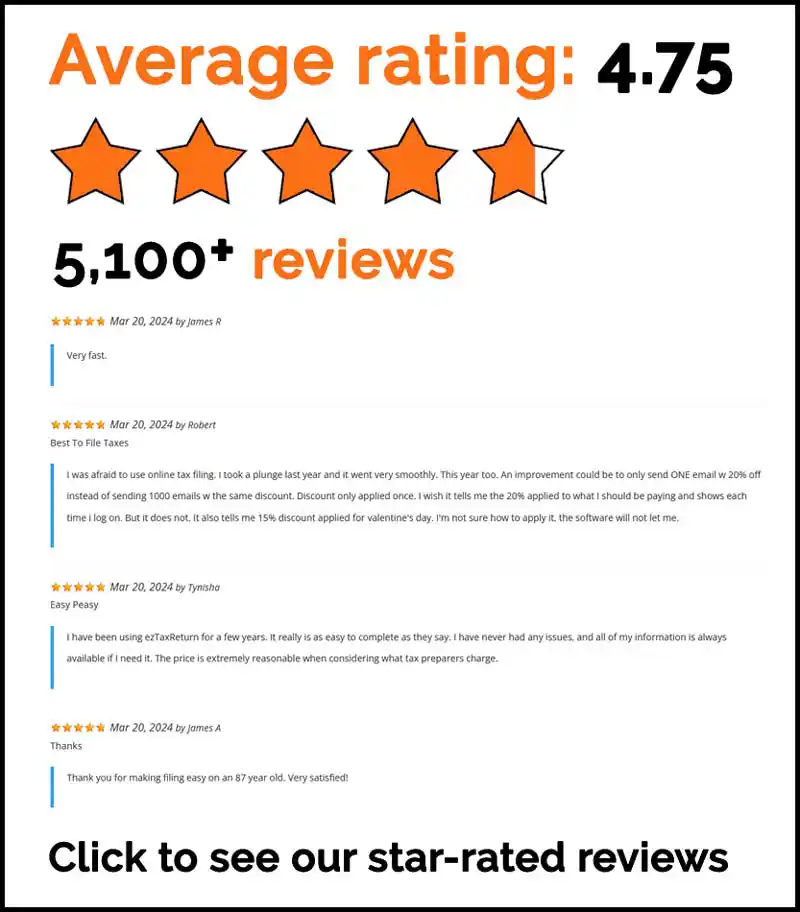Taxes—whether you love them or loathe them—are a necessary part of life. Understanding federal income taxes and how they apply to your financial situation is crucial for effective tax planning. But while paying taxes is unavoidable, there are ways to reduce the amount you owe. By understanding tax deductions, credits, and other smart strategies, you can lower your tax bill and keep more of your hard-earned money.
In this blog, we’ll explore some of the best ways to reduce your tax liability and maximize your savings.
1. Understand Your Tax Bill
What is Taxable Income?
Taxable income is the portion of your income that is subject to taxation by the government. It includes earnings from various sources such as wages, salaries, investments, and business transactions. Understanding what counts as taxable income is crucial because it determines your tax bracket and how much you owe in federal taxes, state and local taxes, and local taxes. By knowing what constitutes taxable income, you can better plan your finances and take steps to reduce your tax burden.
How to Calculate Your Tax Bill
Calculating your tax bill involves a few key steps. First, determine your total income from all sources. Next, subtract any tax deductions you qualify for to arrive at your adjusted gross income (AGI). From there, apply any additional deductions and credits to determine your taxable income. Finally, use the relevant tax rates based on your income level and filing status to calculate your tax bill. Keeping accurate records of your income and expenses is essential, and using tax software like ezTaxReturn can help ensure you don’t miss any potential tax savings.
Importance of Tax Planning for Tax Savings
Effective tax planning is essential for maximizing your tax savings. By understanding your tax bill and leveraging tax deductions and credits, you can significantly reduce your taxable income and lower your tax liability. Tax planning involves analyzing your financial situation, identifying opportunities for tax savings, and implementing strategies to minimize your tax burden. Working with a tax professional can help you create a personalized tax plan that aligns with your financial goals and ensures you’re taking full advantage of available tax benefits.
2. Know the Difference Between Tax Deductions and Credits
A great place to start when lowering your tax bill is understanding the difference between tax deductions and tax credits. It includes earnings from various sources such as wages, salaries, investments, and business transactions, all of which are subject to federal tax. Both can help reduce your taxable income or the amount of tax you owe, but they work differently.
Tax Deductions
Tax deductions reduce the amount of income that’s subject to tax. The lower your taxable income, the less you pay in taxes. Some of the most common deductions include:
- Mortgage Interest: If you own a home, you can deduct the interest you paid on mortgages up to $750,000 ($375,000 if married filing separately). You must itemize to claim this deduction.
- Student Loan Interest: You may be able to deduct up to $2,500 in student loan interest.
- Medical Expenses: If your medical expenses exceed 7.5% of your adjusted gross income (AGI), you can deduct the excess costs. You can also include medical and dental expenses for your spouse and dependents.
Keeping track of these deductible expenses throughout the year can ensure you’re not missing out on potential savings.
Tax Credits
Tax credits, on the other hand, directly reduce the amount of tax you owe, dollar for dollar. They are generally more valuable than deductions. Some popular tax credits include:
- Child Tax Credit: If you have children under 17, you may qualify for up to $2,000 per child.
- Earned Income Tax Credit: For lower-income earners, this credit can be significant. It is worth up to $7,830 for families with 3 or more qualifying children.
- Education Credits: The American Opportunity Credit (AOTC) and Lifetime Learning Credit (LLC) help offset tuition costs. The AOTC is worth up to $2,500 per eligible student during the first 4 years of college. The LLC is worth up to $2,000 per tax return and can be claimed whether you’re taking undergraduate, graduate, and professional degree courses. You must choose the AOTC or the LLC, you cannot claim both.
Tax credits can make a substantial difference in lowering your tax bill, so be sure to explore the credits you’re eligible for.
3. Contribute to Retirement Accounts
One of the most effective ways to lower your tax bill is by contributing to retirement accounts. A Traditional IRA lets you deduct contributions from your taxable income, while a Roth IRA offers tax-free withdrawals in retirement, potentially reducing your capital gains taxes. Not only does this help secure your financial future, but it can also reduce your taxable income for the year.
401(k) Contributions
Contributing to a 401(k) allows you to defer taxes on the money you put into the account, lowering your taxable income for the year. Plus, many employers offer a matching contribution, which is essentially free money. The more you contribute, the bigger the tax benefit. For 2025, the 401 (k) contribution limit is $23,500. Plus, those aged 50 or older can make catch-up contributions up to $7,500.
IRA Contributions
You can also contribute to an Individual Retirement Account (IRA). A Traditional IRA lets you deduct contributions from your taxable income, while a Roth IRA offers tax-free withdrawals in retirement. Both types of IRAs offer unique tax advantages, so it’s worth considering which one fits your financial goals. For 2025, the IRA contribution limit is $7,000 ($8,000 for those aged 50 and up).
Self-Employed Options
If you’re self-employed, you can take advantage of retirement options like the SEP IRA or Solo 401(k), which allow for larger contributions than a standard IRA. These plans can significantly reduce your taxable income.
4. Maximize Health Savings Accounts (HSAs) and Flexible Spending Accounts (FSAs)
HSAs and FSAs are powerful tools that can help you save on taxes, especially when it comes to healthcare expenses. Contributions made to an HSA are tax-deductible, meaning you pay tax on a lower amount of income.
Health Savings Accounts (HSAs)
An HSA offers a triple tax advantage: you can deduct contributions from your taxable income, your money grows tax-free, and withdrawals for qualified medical expenses are tax-free. To contribute to an HSA, you must be enrolled in a high-deductible health plan (HDHP), but it’s a great way to save for future healthcare costs. The 2025 HSA contribution limit is $4,300 for self-only coverage and $8,550 for family coverage. Those aged 55 and older can contribute an additional $1,000.
Flexible Spending Accounts (FSAs)
If your employer offers an FSA, you can use it to pay for qualified medical expenses with pre-tax dollars. You can also use an FSA for dependent care expenses, which can be especially useful if you have children or dependents. Employees can contribute up to $3,300 in 2025. Just be mindful of the “use-it-or-lose-it” rule, as funds in an FSA typically need to be used by the end of the year.
5. Contribute to a 529 Plan
Contributing to a 529 plan is a smart way to save for education expenses while enjoying tax benefits. A 529 plan is a tax-advantaged savings plan designed to help families save for higher education costs. While contributions to a 529 plan are not deductible for federal income tax purposes, many states offer tax deductions or credits for contributions on state income taxes. Additionally, withdrawals from 529 plans are tax-exempt if used for qualified education expenses, such as tuition, fees, and books. By contributing to a 529 plan, you can reduce your taxable income and lower your tax liability, all while building a fund for future education costs.
6. Take Advantage of Capital Gains Tax Rates
The tax code offers more favorable tax rates on long-term capital gains, which apply to investments held for more than a year. By holding onto investments for the long term, you can benefit from lower tax rates.
Short-Term vs. Long-Term Capital Gains
Short-term capital gains are profits from the sale of assets held for one year or less and are taxed at ordinary income tax rates, which are typically higher. In contrast, long-term capital gains are derived from assets held for more than one year and benefit from lower tax rates, making them more favorable for investors. By holding onto investments for the long term, you can reduce the tax impact on your gains and potentially lower your tax bill.
Tax-Loss Harvesting
If you’ve experienced losses in your investment portfolio, you can use tax-loss harvesting to offset gains. By selling investments that have lost value, you can reduce your taxable capital gains.
7. Deduct Business Expenses (for the Self-Employed)
For those who are self-employed, there are many business expenses that can be deducted, reducing your taxable income.
- Home Office Deduction: If you work from home, you may be able to deduct a portion of your home expenses, such as rent or mortgage interest, utilities, and insurance.
- Business Travel: Expenses related to travel for work—flights, hotels, meals—are typically deductible.
- Equipment and Supplies: The cost of items like computers, office furniture, and software may also be deductible.
Make sure to keep detailed records and receipts of your business expenses to take full advantage of these deductions.
8. Consider Tax-Advantaged Investments
Investing in certain types of assets can also help you lower your tax bill.
Municipal Bonds
Investing in municipal bonds can provide you with tax-free interest income. While they generally offer lower yields than taxable bonds, the tax savings make them an attractive option for high-income earners.
Real Estate Investments
Real estate offers a variety of tax benefits, such as depreciation—a way to offset rental income. You can also deduct expenses related to property management, repairs, and mortgage interest.
9. Time Your Income and Expenses
Sometimes, it’s not just about what you earn or spend, but when you do it. Strategic tax planning can help you reduce your tax liability.
Deferring Income
If possible, consider deferring income to the next tax year, especially if you expect to be in a lower tax bracket. This could include delaying a year-end bonus or holding off on selling an asset.
Accelerating Deductions
You might also want to consider accelerating deductions into the current year—such as prepaying your mortgage or charitable contributions—so you can take advantage of them before the end of the year.
10. Use Tax Software: Try ezTaxReturn
If you’re looking for a more convenient and affordable way to handle your taxes, using tax software can be a game-changer. Tax software simplifies the process, guides you through deductions and credits, and helps ensure you don’t miss out on potential savings. If you haven’t tried it yet, ezTaxReturn is a great option for individuals looking for an easy-to-use, affordable tax filing solution.
Conclusion
Lowering your tax bill requires a combination of smart planning, strategic deductions, and taking advantage of tax-advantaged accounts. By making retirement contributions, maximizing deductions and credits, and timing your income and expenses carefully, you can significantly reduce the amount you owe.
The articles and content published on this blog are provided for informational purposes only. The information presented is not intended to be, and should not be taken as, legal, financial, or professional advice. Readers are advised to seek appropriate professional guidance and conduct their own due diligence before making any decisions based on the information provided.




